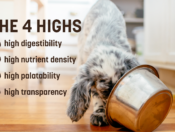Important Things to Know on Pet Food Labels
We believe dogs and cats are so much more than pets. This means providing them the nutrition they need to live long and happy lives as part of our families. When trying to select the best food for your pet, navigating the information on the label can be confusing and misleading. This guide will detail the most important elements on a pet food label to empower you to select the best food for your dog or cat.
Before we dive into the specifics of pet food labeling, it’s important to understand who is setting the rules. Pet food manufacturing and proper label requirements are regulated by the Federal Food and Drug Administration (FDA) and some states. Both federal and state regulators closely follow the guidelines and definitions set by the Association of American Feed Control Officials (AAFCO). AAFCO is a “private, non-profit corporation” that drafts pet food standards and definitions, and advocates for adoption into federal and state law. While AAFCO does not have any regulatory authority, its members consist of federal and state feed control officials that hold authority in their respective jurisdictions. Pet food manufacturers must follow both federal and state laws. As many states adopt AAFCO’s advised regulations, food brands must abide by their more detailed standards to remain compliant. You will see AAFCO’s influence as we discuss the key elements of your pet’s food label.
Regulations for the Order of Ingredients in Pet Food
FDA regulations require ingredients in pet food to be listed in descending order, by weight. One may assume that the ingredients appearing first on a food label were added in the highest quantities. However, this weight is calculated prior to processing which includes water weight. Some ingredients may be added in dehydrated form, making the concentration much higher, while others, like meat, may contain up to 75% water. Some brands leverage this with misleading marketing claiming their competitor’s food is inferior due to the order of their ingredients while ignoring that their competitor may be using dehydrated ingredients.
Manufacturers may also separate an ingredient into many different forms which can make it appear less dominant in their recipe. For example, a brand may boast that meat is their first ingredient while corn is their second. When looking deeper at the ingredient list you will find that corn is listed as the second ingredient along with various forms of corn sprinkled throughout the ingredient panel. This could include corn bran, cornmeal, corn germ meal, corn gluten meal, ground corn, and ground yellow corn later in the ingredients. When added together under the category of “corn,” these ingredients would far outweigh meat as the primary ingredient.
When looking at the ingredients in pet food labels, remember to factor in the water content of each ingredient. Keep in mind that ingredients derived from the same source may also be broken down into a variety of smaller parts.
Quality Listing on the Ingredient Panel
AAFCO’s guidelines also specify that “the ingredient list cannot include any reference to quality or grade of an ingredient.” The USDA’s grading standards for meat (prime, choice, select) allow humans to make informed choices around the quality of the meat they are feeding themselves and their families. However, due to AAFCO’s guidelines, pet parents are unable to make these same educated decisions.
We recommend always researching pet food brands to find where their ingredients are sourced. Be skeptical of brands who are unwilling to provide this information as they may be trying to hide low-quality sourcing. At Earth Animal, we believe the proof is in transparency and provide sourcing information on our website for all products. Dr. Bob’s Wisdom Dog Food is made with high-quality, Global Animal Partnership-certified Chicken and Turkey muscle meat. This guarantees that our poultry farms adhere to GAP’s animal welfare standards, are raised without antibiotics or hormones and are fed a vegetarian diet free of byproducts.
“Chemical Sounding” Ingredients in Pet Food Ingredients
The FDA states that ingredients must be listed by their “common or usual names.” When it comes to vitamins and minerals, these may be less common to consumers and are often referred to as “chemical-sounding.” Common examples of vitamins you may find on your food label include pantothenic acid (B5), pyridoxine hydrochloride (salt or powdered version of water-soluble Vitamin B6), and thiamine mononitrate (stabilized version of thiamine (Vitamin B1). These are all essential to have in your pet’s diet and contribute to vital bodily functions. When creating a complete and balanced recipe, it is nearly impossible to achieve the required levels of vitamins and minerals solely through food sources. Supplementation of vitamins and minerals helps to prevent deficiencies and keep your pet healthy and happy.
What the Guaranteed Analysis Is and Where It’s Located
Following AAFCO guidelines, many states require that pet foods guarantee minimum levels of crude protein and crude fat and maximum levels of crude fiber and moisture. Percentages are represented “as fed” which includes inherent moisture content and are typically listed near the ingredient list on the back of food bags. The guaranteed analysis provides a chemical versus biological analysis of nutrients.
What Crude Means in the Guaranteed Analysis
The word “crude” refers to the method of testing used to evaluate nutrients in a food. For example, crude protein is an estimation of protein that is determined by measuring the nitrogen content of a food. Nitrogen is produced by amino acids, the building blocks of protein, in both animals and plants. Therefore, crude protein does not necessarily mean “meat” protein. In fact, it may not reflect protein sources at all.
In 2007, the FDA issued recalls on certain pet foods after they were linked to the deaths of numerous dogs and cats. Their investigation, in partnership with the USDA, revealed that these foods had been tainted with melamine, a nitrogen-based compound used in commercial and industrial plastics. It was found that melamine was purposely added to these foods to inflate the crude protein levels. An update on the FDA website states that in “2008, […] two Chinese nationals and the businesses they operate, along with a U.S. company and its president and chief executive officer, were indicted by a federal grand jury for their roles in a scheme to import products purported to be wheat gluten into the United States that were contaminated with melamine.” Since then the FDA has taken numerous steps to prevent adulteration of imported vegetable protein and concentrated protein sources.
This is an important lesson to remember when evaluating pet food. “Crude” measurements provide a chemical analysis that does not reflect quality, digestibility, or biological value. Always evaluate whether the crude levels are within a reasonable range given the ingredients listed. We also recommend buying food from companies that offer transparency in sourcing and commit to high-quality ingredients.
Comparing Nutrients in Pet Food “As Fed” versus “Dry Matter”
The nutrient percentages in the guaranteed analysis are calculated on an “as fed” basis which includes the water content of the food. When compared to a low moisture food, high moisture content can make nutrient levels appear lower or watered-down. Always compare foods of differing moisture content on a “dry matter basis,” which removes moisture from the equation. At 0% moisture, this ensures foods are assessed accurately.
Below we have included the steps to converting as fed guarantees to dry matter. Some brands may also provide dry matter analysis on their website or through reaching out to customer service:
- Subtract the Moisture %, listed on the guaranteed analysis, from 100%
- Divide the nutrient’s as-fed percentage by the number you got in Step 1. This will work for additional nutrients that are not required in the Guaranteed Analysis such as certain vitamins and minerals.
- Multiply your number from Step 2 by 100% to obtain the dry matter percentage of that nutrient.
Nutritional Adequacy Statement
To ensure you are feeding your pet a “complete and balanced” food, always look for the AAFCO Nutritional Adequacy Statement. This statement is usually located on the back of the bag and will indicate whether the food contains enough nutrients to support:
- Growth (puppies, kittens, and reproduction)
- Maintenance (non-reproducing adults)
- All-life Stages (puppies, kittens, reproduction, and non-reproducing adults)
These nutritional adequacy claims can be supported in two ways:
- The food is formulated with ingredients that contain all the necessary nutrients required by AAFCO Dog or Cat Food Nutrient Profiles. These foods bear the statement “(Name of product) is formulated to meet the nutritional levels established by the AAFCO (Dog/Cat) Food Nutrient Profiles.”
- The food is tested using AAFCO Feeding Trial Protocol(s). This means that “the product, or “lead” member of a “family” of products, has been fed to dogs or cats under strict guidelines [for 26 weeks] and [was] found to provide proper nutrition.” These foods bear the nutritional adequacy statement, “Animal feeding tests using AAFCO procedures substantiate that (name of product) provides complete and balanced nutrition.”
Unlike food, treats and supplements are not meant to provide a complete diet. They will include the statement, “this product is intended for intermittent or supplemental feeding only.” With many toppers being introduced to pet food aisles, these can be easily mistaken for a complete and balanced diet. This underscores the importance of locating the Nutritional Adequacy Statement. Many toppers are meant to be added to complete diets for flavor enhancement or health benefits and do not contain the proper levels of nutrients.
Feeding Guidelines
Feeding guidelines are recommendations for how much food to feed your pet daily. These are usually located on the back of pet food packaging. There are no standard rules for how to calculate these requirements and they are often calculated for a pet with a more active metabolism. If your pet is less active or has a slower metabolism, overfeeding will lead to obesity. If your pet is highly active or has a faster metabolism, feeding the recommended amounts may not be enough and can lead to underweight pets. We suggest always feeding the recommended amounts to start and increasing or decreasing as needed to maintain a healthy body weight. An easy rule to remember is to adjust their food in increments of 20% until they are maintaining a healthy weight.
How to Know If Your Dog is Hungry
This can be a common concern for pet parents. Foods that are highly digestible are more bioavailable. This means your dog will absorb more nutrients with a smaller amount of food which can cause concerns over hunger. Despite the occasional puppy eyes or begging, if your pet is receiving regular meals and the proper number of calories it is highly likely that they are not hungry. As we know, the proper amount of food results in maintaining a healthy weight. We recommend dividing their daily recommended feeding amount into two meals that are 8-12 hours apart.
Evaluating Information on Pet Food Labels
Understanding how ingredients are ordered, the calculations behind the nutrient analysis and feeding guidelines, and how nutritional adequacy is substantiated will help you make more informed decisions about your pet’s food. Remember that much of the information on a pet food label does not indicate quality or biological value and your pets’ requirements are unique to them. Be sure to always select brands that are transparent and hold high standards of integrity.
Since 1979, Earth Animal has been committed to being the most mindful, trusted, and respected company in the pet industry by exploring Another Way® — a more holistic, humane, and sustainable way to change things for the better, one Earth animal at a time. To see how this reflects in Dr. Bob Goldstein’s Wisdom Dog Food, click here.






